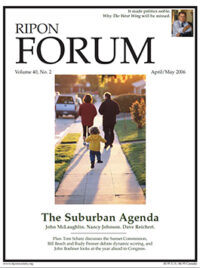
Advocates for pro-growth tax cuts are frustrated.
They are frustrated because formal revenue loss estimates used by Congress during the budget process ignore revenues recouped from the increase in economic activity which occurs as a result of the pro-growth tax cuts. Thus, formal revenue estimates tend to exaggerate a pro-growth tax cut’s negative effects on the budget deficit. This is obviously illogical, but those who are frustrated and want the error corrected should be cautious. They may be cursed by getting what they wished for.
The fact of the matter is that economists differ significantly in their assessment of the effects of tax cuts. A good number of economists also believe that more research into these effects — also referred to as dynamic analysis — may narrow some of the differences in these assessments, and that new research should definitely be encouraged. These economists should be happy, for that is exactly what’s happening.
The president’s 2007 budget would establish a Division on Dynamic Analysis in the U. S. Treasury. The establishment of this office follows up on the decision of the Joint Committee on Taxation (JCT) to provide a full dynamic analysis of the 2003 tax bill. The JCT has done similar studies of other tax options, as well. The Congressional Budget Office (CBO) also routinely conducts dynamic analyses. The dynamics of the president’s budget are analyzed annually, and numerous papers study the economic effects of different tax and spending policies. Of course, in these cases, dynamic analysis is conducted for informational purposes only and plays no formal role in Congressional budgeting.
Formal, static scoring is used to enforce budget discipline. For example, the Congress’s budget may set a limit on revenue losses. Analysts from the JCT or CBO then evaluate tax policy changes, and if the estimated revenue loss exceeds the limit, the legislation is subject to a point of order that can only be overcome by 60 votes in the Senate. Formal scoring is said to be static, because tax policy’s effects on macroeconomic variables such as gross domestic product (GDP) and the consumer price index (CPI) are not considered. However, not all effects on individual behavior are ignored. If, for example, the Congress is considering a cut in the gasoline excise tax, the revenue estimate will assume that the demand for gasoline will rise as its price falls. It will not, however, consider any effect on the CPI. Thus, the estimate will ignore the deficit reduction from using a lower CPI to index benefit programs and the income tax rate structure.
It seems illogical to ignore such effects, but there are important conceptual, political, and logistical reasons why a more complete analysis would be difficult, if not impossible. Conceptually, the tax cut’s effects on economic activity depend crucially on how it is financed. Is it by immediate spending cuts, or spending cuts in the future? Is it by future tax increases, or by more government borrowing? Or is it financed simply by printing more money? To produce a single estimate, analysts would have to decide which of these mechanisms is most likely. That would immediately land them in political hot water, because the Congress gets very annoyed when their employees forecast future votes on policy issues.
However, there is a more unseemly political problem. Many tax cuts have a negative impact on economic activity. For example, increasing the generosity of the tax treatment of housing will draw investment from more productive activities and, in the process, dampen economic growth. It would bias the policy process terribly to examine positive, but not negative, impacts. One can be sure, though, that Congress will tire of dynamic scoring quickly if negative impacts are made explicit.
But they need not worry. Consistent dynamic scoring is logistically impossible given current technology. Scoring is a hectic process. The CBO and JCT produce hundreds of scores each year. Congress always wants scores instantaneously, and analysts often work through the night to keep them happy. Dynamic scoring would force analysts to make many more judgment calls than they do today. Quality control would be difficult, and that implies a high risk that ideological biases will pollute the analysis. Even if that doesn’t happen, dynamic analysis would be just as logically inconsistent as static analysis.
As it stands now, all analysts work from the same assumptions regarding the GDP, CPI, and other macroeconomic variables. But under dynamic scoring, analyst A may decide that provision 203(c) of a tax bill raises the GDP. Theoretically, that probably should affect the score provided by analyst B for section 413(d) of that same bill. But what if analyst B decides that his provision reduces GDP? Analyst A should then redo her estimate, but she probably won’t have time. The problem grows exponentially, because dozens of analysts may be working on tax and spending proposals simultaneously, all changing macro variables at will and using inconsistent assumptions without the full knowledge of anyone in authority.
There may come a day when there is sufficient agreement about dynamic effects to automate the process using powerful computers. But we are many decades from such technology. So, for a very long time, the Congress will have to be satisfied with static scoring. That is not so bad. The CBO’s dynamic analysis suggests that static scoring is usually pretty accurate. The middle of their wide range of estimates of the dynamic effects of a 10 percent income tax rate cut implies that static analysis overstates the increase in the deficit by less than 14 percent over a 10-year period.
Oratory praising the beneficial effects of tax cuts may be more effective when unrestrained by such analysis.
Rudolph G. Penner is a Senior Fellow at the Urban Institute and a former director of the Congressional Budget Office.




